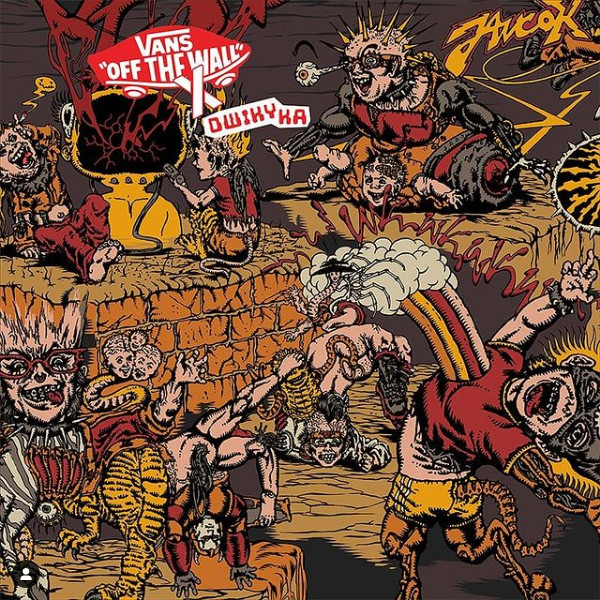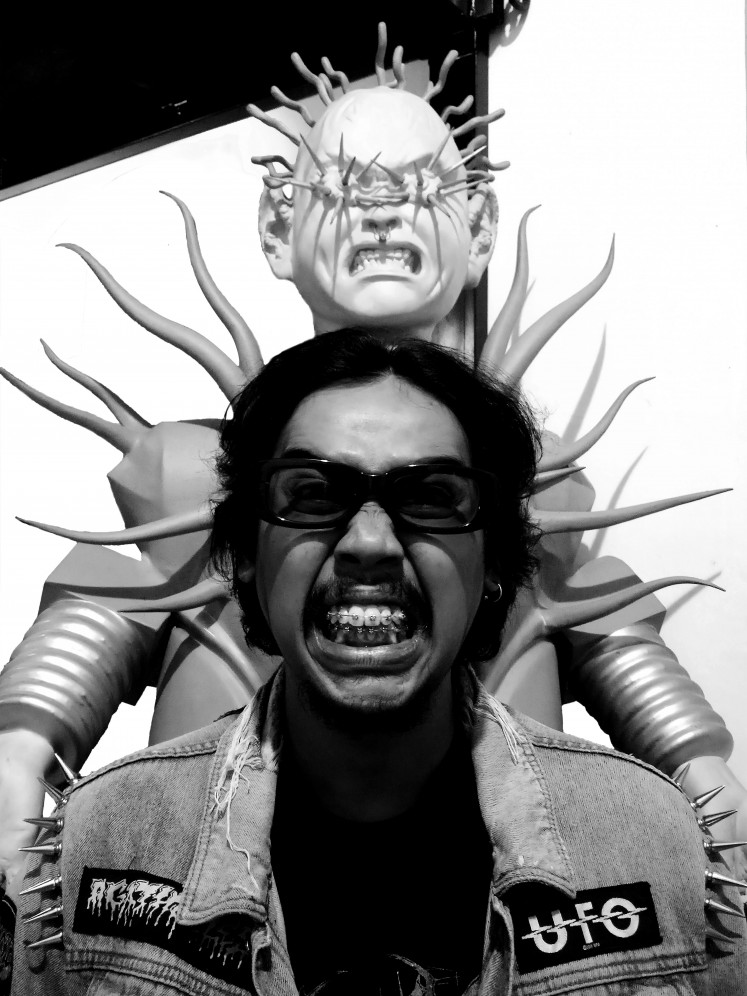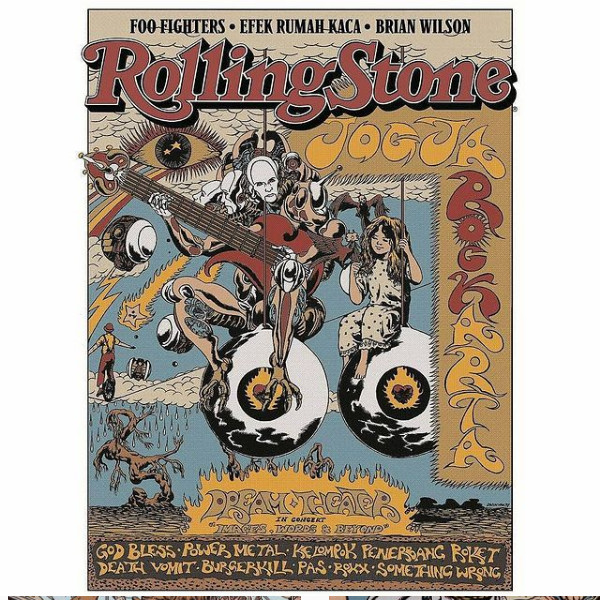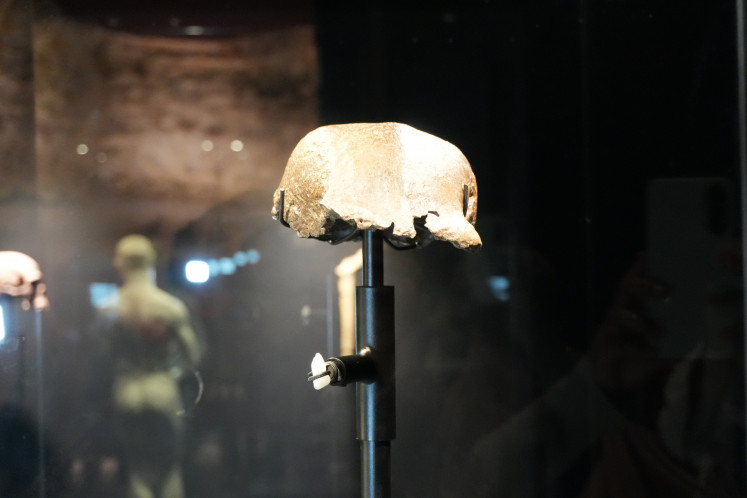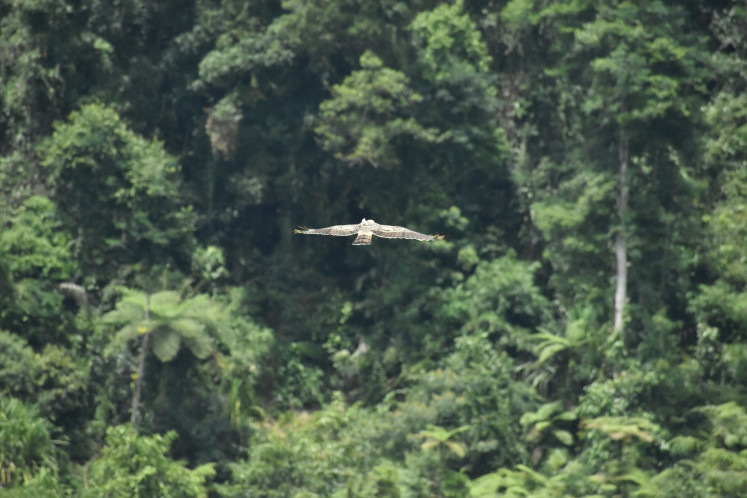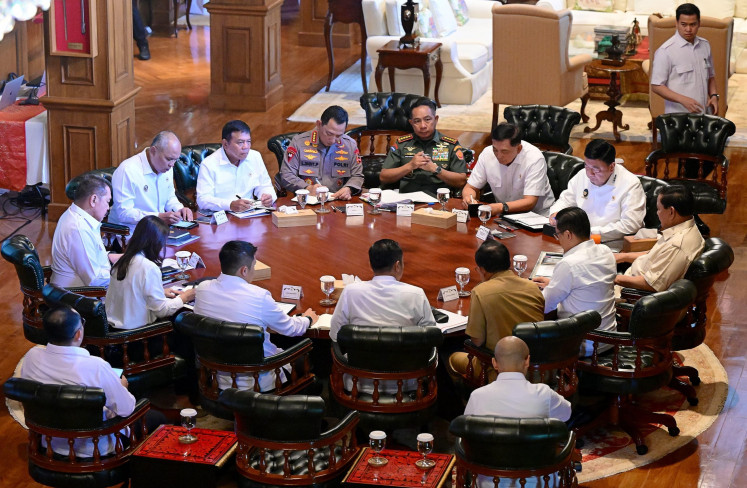Popular Reads
Top Results
Can't find what you're looking for?
View all search resultsPopular Reads
Top Results
Can't find what you're looking for?
View all search resultsExtreme pop: Dwiky KA’s 'guyonan' illustrations put Surabaya on the global map
Through his 'extreme pop' style of illustration, Surabaya artist Dwiky KA is the first Indonesian to work with Vans.
Change text size
Gift Premium Articles
to Anyone
The name Dwiky Kristio Aditama, or Dwiky KA, is on everyone’s lips these days.
On Aug. 17, the commemoration of Indonesia’s independence day, the 28-year-old illustrator announced his collaboration with Vans for a signature shoe and apparel line featuring his artwork as part of the company’s summer collection of 2021, making him the very first Indonesian artist to be featured by the iconic California-based brand.
The illustration features disfigured humans with animal body parts doing all sorts of wild things. While bright and colorful, Dwiky’s art is deceptively chaotic, disturbing and yet mesmerizing.
Titled Planet WKWK-99X, it’s a reference to a local phenomenon of Indonesians typing out “wkwk” to express laughter, as opposed to the more common “LOL” or “haha”.
Talking exclusively to The Jakarta Post via Zoom on Aug. 20, Dwiky said he was trying to capture something that was inherently Indonesian; something that was close to him.
“I was thinking of doing something with wayang [shadow puppet], but it’s not that relatable anymore, so I just drew inspiration from something that is closer to me: guyonan [jokes in Javanese],” Dwiky said.
“Indonesia is very dynamic when it comes to its humor culture, especially in this internet meme era. Every time there’s a serious matter, people would deal with it by making jokes about or around it. Humor brings Indonesian together like none other."
Extreme pop
Dwiky’s journey into the world of illustration started in high school when he would draw for his friends' death metal bands, which were a popular staple of the underground music scene at the time.
“I couldn’t play an instrument, so drawing was my way to fit in with those guys,” he said laughing.
The dark and extreme aesthetics of the underground music stayed with Dwiky and would become one of the main components of his visual identity today, alongside his love for science fiction and old gory Indonesian comic books such as Siksa Neraka (Hell Torture), as well as local superheroes such as Godam and Gundala.
Read also: Balinese artist Andre Yoga’s provocative mindscapes describe a nation in crisis
“In terms of plot, they’re pretty average — no different from western superheroes. However, what attracted me is the fact that they like to mix science fiction with local and klenik [occult] elements, which is bizarre,” Dwiky recalled. “For example, Sri Asih, who is a wayang character, would fight against aliens from another planet; or having a tuyul [mischievous, child-like spirit] that turns out to be a cyborg. I love that kind of stuff,” he said excitedly.
This mesh of influences would define Dwiky’s illustration style, which he playfully refers to as “extreme pop".
“It’s bright and colorful, which is associated with pop culture, but I haven’t abandoned the dark and sadistic elements of the underground music that I love,” Dwiky described. “It’s a coalescence of extreme and fun.”
The breakout
Dwiky got his breakout moment in 2017 when he won a poster contest for Thursday Noise, a monthly indie rock gig hosted by Jimi Multhazam, the frontman of Morfem and The Upstairs, which featured the country’s most exciting sidestream talents at the time.
“The exposure that I got was pretty big after winning Thursday Noise,” Dwiky said. “Enough to introduce my illustration to the music scene, as well as the more commercial projects.”
He went on to work on his biggest animation project yet: Morfem’s music video for “Binar Wajah Sebaya”, for which he drew roughly 10,000 frames of illustrations in the span of six weeks.
“It was supposed to be just a static lyric video, but I thought that would be a disservice to such a good song,” Dwiky recounted. “So, it was my idea to do it frame-by-frame, and I really enjoyed the process.”
In 2018, Dwiky’s illustration graced the cover of the now-defunct Rolling Stone Indonesia magazine, for an edition that featured the Jogjarockarta music festival, headlined by American progressive rock band Dream Theater. It was one of those rare moments Dwiky felt really satisfied with his work.
“The cover was also a poster,” he said. “It was such a cool experience, as I had been given complete freedom artistically, so I had a blast doing it.”
Surabaya identity
You can take a man out of a city, but not the city out of the man. Although he has been living in Yogyakarta for the past three years, Dwiky’s identity as a native Surabayan is something that he holds dear and thus always imbues into his illustrations.
“Surabaya’s people are associated with being rough, tough and straightforward,” he said. “So, I try to translate those attitudes into my copy and visual. I think it’s because Surabaya is extremely hot, has bad traffic and super spicy food — no wonder people get angry easily there,” he said chuckling.
Music-influenced: The cover of the "Rolling Stones Indonesia" magazine in 2018 featuring Dwiky's illustration. (Personal collection/Courtesy of Dwiky K.A.)In his illustration for Vans, Dwiky inserted the word “JANCOX", a signature swear word for Surabayans and its surrounding areas in East Java. Although considered a bad word, it has become a symbol of identity for Surabayans and is often used as a greeting among friends (shortened to “cok” or “cuk”).
Read also: The art of collaboration: Irene Febry invites us to look closer
In a digital, boundaryless era such as now, Dwiky feels that it’s extremely important more than ever to present your identity in your creation.
“If we’re talking about skill or technicalities, everyone can gain those. A lot of high schoolers can draw really well these days, so I don’t think [age is] a parameter anymore,” Dwiky said.
“Having an identity, reflected in symbols, from the topics you tackle, how you share it to the public, your connection to the community you’re a part of — I think that’s more important, that’s what you’re selling.”

